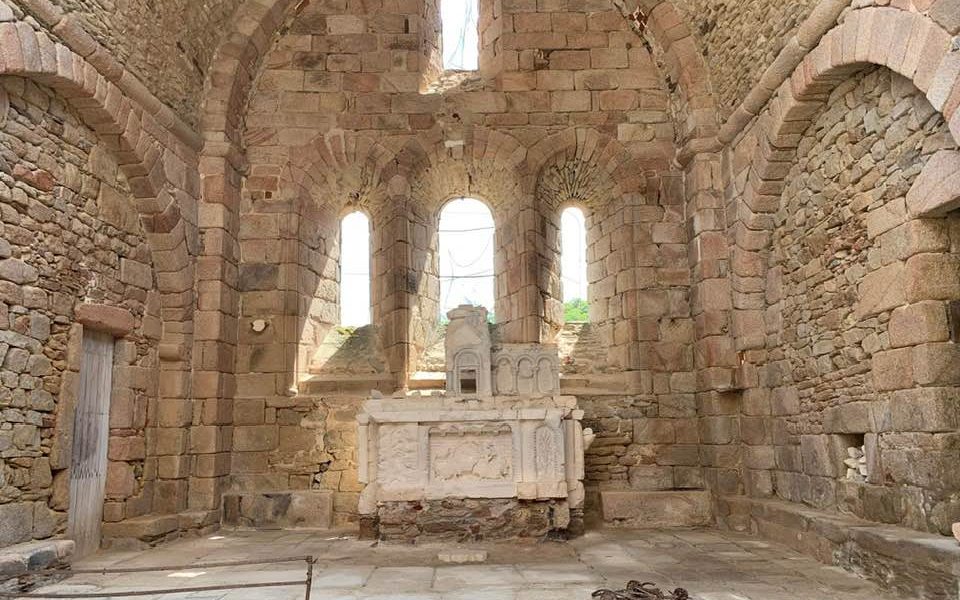Twenty-two kilometres northwest of Limoges, in the heart of the Limousin countryside, the village of Oradour-sur-Glane minds its own business. The people run the shops, they farm the land and fish the lakes. After work they gather on the village square to share a drink, a game of cards or pétanque. Aproned housewives exchange gossip from doorways, one eye on their children playing on the square. To an outsider, it seems these people live in almost oblivion of World War II raging around them.
That is until, on a quiet, sun-filled afternoon on June 10th, 1944, when a company of troops from a Waffen-SS unit of the military forces of Nazi Germany marches into the village, surrounds it and orders the inhabitants from their homes.
‘Everyone go to the fairground … just a simple identity check,’ they say to the Mayor, Jean Desourteaux. The people are wary though, and hungry, because it’s lunchtime.
Once they are assembled, the SS men change their story, claiming they have come to search for arms and black market items. The troops herd the men into several different barns, the women and children into the church, whilst they search for these alleged goods.
But there is no search. There is only a shockingly vicious massacre: a gas bomb is set off in the church, but it doesn’t go off properly, so the SS finish off the women and children with machine guns and hand grenades. They then throw wood onto the piles of bodies (some still alive) and set the whole place on fire.
Only one woman, 47-year-old Marguerite Rouffanche, escapes the church alive. After witnessing the deaths of not only her daughter, but all her fellow village women, she throws herself from a window to the ground 10 feet below. Despite multiple gunshot wounds, Madame Rouffanche manages to crawl around to the back of the church. And there she hides between rows of peas until the following day when she is rescued by another group of villagers who fled when the soldiers first arrived.
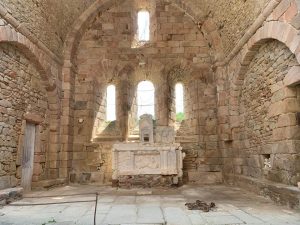
Meanwhile, the SS are firing on the men in the barns. After killing or injuring most of them, once again they pile wood and straw onto the bodies and set everything alight. Only five men manage to escape one of the barns, making their getaway once darkness falls.
Amidst the cries and screams of the men and women burning to death inside the barns and the church, the soldiers roam the village, searching for evaders. They shoot people on the spot, where they find them. Outsiders attempting to enter the village to see what’s happening are also killed.
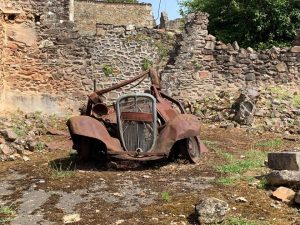
Later that night, after looting the entire village and setting it alight, the SS flee. In a horrific violation of the tranquil village of Oradour-sur-Glane, over 640 inhabitants have been murdered in just a few hours.
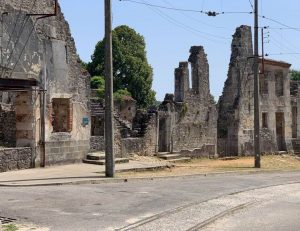
Why did the SS carry out this heinous crime? People have been asking this question ever since 10th June, 1944, without any definite answer being found.
Oradour-sur-Glane was not known for any particular Resistance activity, and if the massacre was a reprisal for an act or acts of violence towards the occupying German forces, surely they would have stated this? But the SS left Oradour without giving any reason or explanation for why they had murdered almost an entire population, and destroyed a village.
AFTERMATH: After the war, the then French president, Charles de Gaulle, decided to maintain the ruins of Oradour “in a ruined state”, as a permanent memorial. The village was thus left as it was the day of the Nazi soldiers’ murderous rampage.
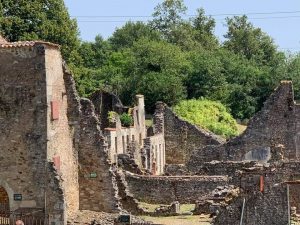
In 1989, the project for the Centre de la mémoire d’Oradour (memorial centre of Oradour), to commemorate the massacre, was presented to the French president, François Mitterand. It was opened in 1999 by President Jacques Chirac and by 2002 the centre had welcomed 300,000 visitors to its permanent and temporary exhibits.
I visited the Oradour ruins many years ago, staring in disbelief at the burnt-out homes and buildings as I walked about. Tram tracks that had run everywhere now led to nowhere. The car from which the village mayor was hauled and shot lay rusting by the roadside. A few (now rusted) items survived the inferno: a sewing machine, plates set at a table for the midday meal, the charred remains of a child’s doll, the blackened, crumbling façades of their homes.

A rusty, flattened pram littered the church floor in front of the altar – all gruesome witnesses to a village full of living, laughing, loving people; to families cut down in the midst of their peaceful daily routine.
On the day of my visit, they were very few tourists. It was deathly quiet and I just stood in one spot and listened. Ghostly sounds echoed in my ears: the laughter of those playing children, the gossip of those housewives, the banter of those drinking, card-playing men. The voice of the baker, the butcher, the artisans. The barking of dogs, the clucking of hens.
Echoes of lives, of a village, obliterated.
As I left the ruins, the echoes fading along with my footsteps, all I was left with was a shocking, heart-wrenching silence.
Several years later, I learned that the countryside area in which I live in France (not near Oradour-sur-Glane), was a hotbed of French Resistance fighters against the Nazi Occupation.
This fact, coupled with the Oradour-sur-Glane tragedy, became the basis for my novel, Wolfsangel, second (standalone) story in my French historical trilogy, The Bone Angel
All photographs used are courtesy of Venetia Hos-Edwards. Many thanks.
To commemorate the tragedy of Oradour-sur-Glane, my novel, Wolfsangel is currently on promotion for only 99c/p HERE
Sign up here on my website for information on new book releases and to receive a free copy of Friends & Other Strangers, my award-winning collection of Australian short stories.
